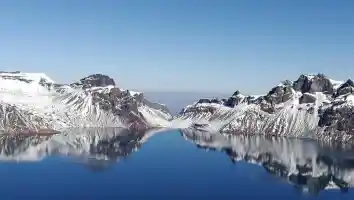
Mogao Caves - Ancient Art Treasures in China
Discover Mogao Caves: A Treasure Trove of Buddhist Art
1. Location and Overview 🌍
Location: The Mogao Caves, also known as the Mogao Grottoes or the Thousand Buddha Grottoes, are located near the city of Dunhuang in Gansu Province, China. Situated along the ancient Silk Road, these caves are approximately 25 kilometers (16 miles) southeast of Dunhuang.
Overview: The Mogao Caves are a system of 492 temples carved into cliffs above the Dachuan River. They are famous for their stunning murals and statues, which date back to as early as the 4th century AD. As a UNESCO World Heritage Site, the Mogao Caves represent a magnificent blend of art, history, and religion, showcasing the cultural exchanges that took place along the Silk Road.
2. Unique Features 🌟
- Buddhist Art: The caves house one of the most important collections of Buddhist art in the world, including over 2,400 statues and 45,000 square meters of murals.
- Historical Significance: The Mogao Caves illustrate the cultural and religious exchanges that occurred over a thousand years along the Silk Road.
- Architectural Marvel: The intricate carvings and diverse architectural styles reflect the influence of various cultures and dynasties, making each cave unique.
3. Seasonal Changes 🍂🌸
- Spring (March-May): Mild temperatures and blooming desert flowers make this a pleasant time to visit.
- Summer (June-August): Hot and dry, with temperatures often exceeding 30°C (86°F). Early mornings and late afternoons are the best times for tours.
- Autumn (September-November): Cooler temperatures and clear skies provide ideal conditions for exploring the caves.
- Winter (December-February): Cold and dry, with fewer tourists, offering a more intimate experience.
4. Best Time to Visit ⏰
The best time to visit the Mogao Caves is from late spring to early autumn (April to October), when the weather is mild and the site is fully accessible.
5. Travel Tips ✈️
- Book in Advance: Due to the popularity and preservation efforts, it’s recommended to book your tickets in advance, especially during peak season.
- Dress Comfortably: Wear light, breathable clothing in summer and layered clothing in winter. Comfortable walking shoes are essential.
- Stay Hydrated: The desert climate can be very dry, so carry water with you.
6. Cultural Significance 🕉️
The Mogao Caves hold immense cultural and religious importance, serving as a hub for Buddhist monks and scholars over centuries. The site reflects the spiritual, artistic, and scholarly pursuits of the time, with influences from India, Persia, and Central Asia evident in the artwork.
7. Tourist Attractions 📸
- Cave 16: Known for its impressive statues and murals depicting Buddhist stories and legends.
- Cave 17 (Library Cave): Famous for the discovery of thousands of ancient manuscripts and documents, providing invaluable insights into the history and culture of the Silk Road.
- Cave 96 (Nine-Story Pagoda): The tallest structure at Mogao, featuring a giant Buddha statue and panoramic views of the site.
- Cave 285: An early cave with unique depictions of non-Buddhist deities, showcasing the syncretic nature of Silk Road art.
8. Nearby Attractions 🏞️
- Crescent Lake and Echoing Sand Mountain: A picturesque oasis and sand dunes located just outside Dunhuang, ideal for a desert adventure.
- Dunhuang Museum: Offers a comprehensive overview of the region’s history, including artifacts from the Silk Road and the Mogao Caves.
- Yumen Pass: An ancient pass that was a critical gateway on the Silk Road, providing historical context to your visit.
9. How to Get There 🚗
- By Air: The nearest airport is Dunhuang Airport (DNH), which has flights from major cities like Beijing, Xi'an, and Lanzhou. From the airport, you can take a taxi or shuttle bus to Dunhuang city center and then to the Mogao Caves.
- By Train: Dunhuang Railway Station is well-connected with trains from Lanzhou, Xi'an, and other major cities. From the station, taxis and buses are available to reach the Mogao Caves.
- By Bus: There are direct bus services from Dunhuang city to the Mogao Caves. The journey takes about 30 minutes.
- By Car: Renting a car is an option, offering flexibility and the chance to explore the surrounding areas at your own pace.
10. Practical Information ℹ️
- Entrance Fee: The entrance fee for the Mogao Caves is approximately 200 RMB (around $30 USD), but prices may vary by season and include a guided tour.
- Opening Hours: The caves are open from 8:00 AM to 6:00 PM, with the last entry usually at 5:30 PM. It's best to check the official website for the most up-to-date information.
- Guided Tours: Guided tours are mandatory to help preserve the site. Tours are available in multiple languages, including English.
11. Local Cuisine 🍜
- Dunhuang Yellow Noodles: A local specialty, these wheat noodles are served in a savory broth with beef or lamb.
- Dunhuang Stuffed Bread: A popular street food, these flatbreads are stuffed with meat and vegetables, then baked or fried.
- Camel Hoof Soup: A traditional delicacy, this soup is believed to have health benefits and is often enjoyed during special occasions.
12. Conclusion 🌟
The Mogao Caves are a must-visit destination for history buffs, art lovers, and cultural enthusiasts. This ancient site offers a unique glimpse into the rich tapestry of Silk Road history and Buddhist art. Plan your visit to explore the breathtaking murals, intricate carvings, and profound cultural heritage of the Mogao Caves.
















Comments
Leave a reply